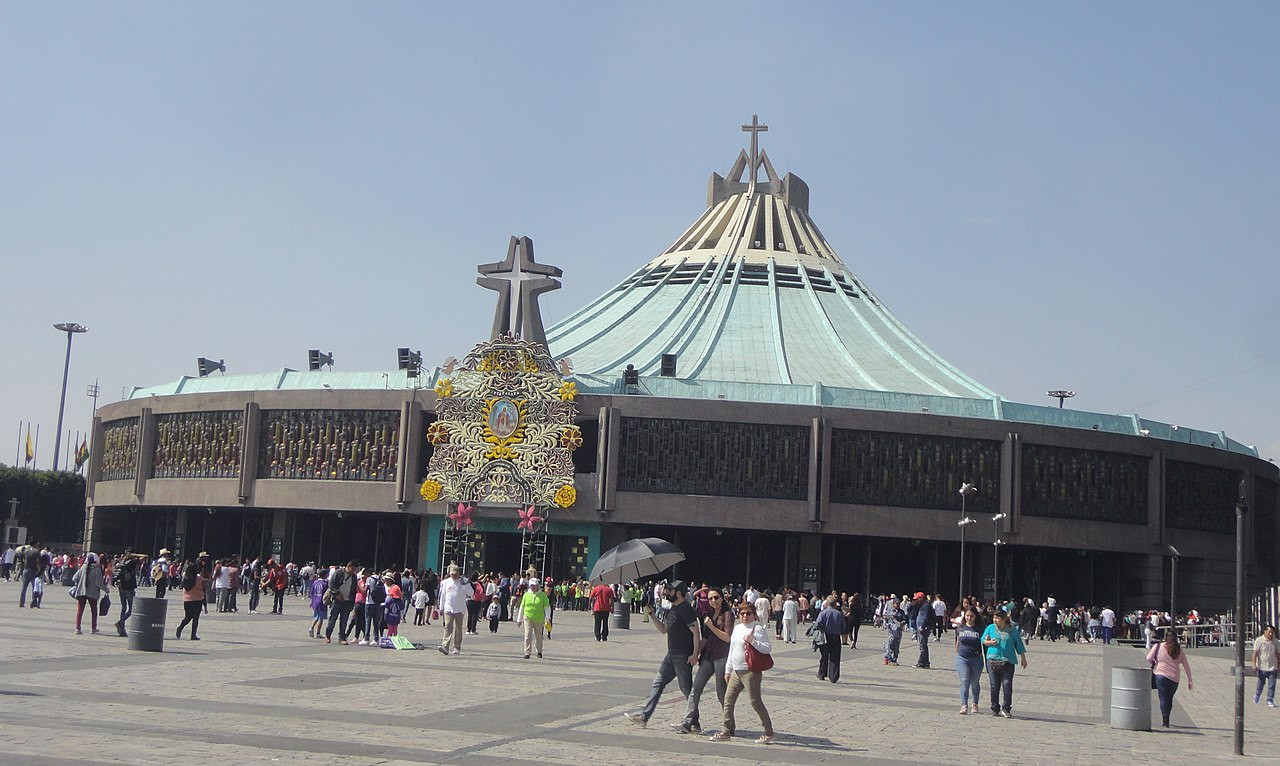The New Basilica of Guadalupe stands as a testament to modern architecture and unwavering faith, a structure intentionally built to complement and contrast with the beloved Old Basilica Building, now known as the Expiatory Temple of Christ the King. Located to the west of the expansive Atrium of the Americas, this basilica is an instantly recognizable symbol within the larger Basilica complex and a powerful emblem for devotees.
 The modern architectural marvel of the New Basilica de Guadalupe in Mexico City, a significant pilgrimage destination.
The modern architectural marvel of the New Basilica de Guadalupe in Mexico City, a significant pilgrimage destination.
The construction of the New Basilica became essential due to the structural vulnerabilities of the Old Basilica. Years of seismic activity and land subsidence had rendered the original structure increasingly unsafe. Furthermore, the Old Basilica could no longer accommodate the burgeoning number of pilgrims who flocked to this sacred site. The sheer volume of visitors necessitated a larger, more modern space to properly host and honor the millions who came seeking spiritual solace and connection.
A team of five distinguished architects, including José Luis Benlliure, the celebrated Pedro Ramírez Vázquez, Alejandro Schoenhofer, Fray Gabriel Chávez de la Mora, and Javier García Lascuráin, collaborated on the design of this new basilica building. Construction commenced in 1974 and culminated on October 12, 1976, marking a relatively swift completion for such a monumental undertaking. On this date, a solemn procession carried the revered image of the Virgin of Guadalupe to its new home within the sanctuary. The basilica’s distinctive circular form is deeply symbolic, conceived to evoke the image of the tent that sheltered the Ark of the Covenant during its journey through the desert, drawing parallels to themes of pilgrimage and divine presence. The roof’s weight is uniquely supported by a reinforced concrete circular frame, and it is clad in copper sheets, which have oxidized over time to create its signature green patina. Beneath the surface, 344 control piles are driven deep into the earth, providing a robust and stable foundation.
The circular interior design, deliberately devoid of pillars, ensures unobstructed views of the Virgin of Guadalupe’s image from virtually any point within the basilica. Positioned behind the main altar and beneath a prominent cross, the image is the focal point of the space. To manage the continuous stream of devotees wishing to view the image, a moving walkway was installed before the altar. This innovative feature allows for a smooth and efficient flow of people, maximizing the number of pilgrims who can approach and venerate the Virgin. Inside, visitors can also encounter Pedro Medina Guzmán’s 1980 mural, “The gift of the Resurrection,” along with other murals depicting scenes from the story of Juan Diego and the apparitions of the Virgin of Guadalupe, enriching the basilica’s artistic and spiritual atmosphere.
The basilica features seven entrances, and at its forefront lies an open-air chapel, a design element that pays homage to the traditional church atriums prevalent in the 16th century. This space provides an area for reflection and gathering before entering the main sanctuary.
Throughout its history, the New Basilica has welcomed a diverse array of prominent figures, from heads of state and renowned athletes to influential politicians, celebrated artists, and leading figures within the Catholic Church and other faiths. Notably, Pope John Paul II visited the basilica on multiple occasions: in 1979, 1990 for the beatification of Saint Juan Diego, 1999 at the conclusion of the Synod of Bishops of America, and in 2002 for the canonization of Saint Juan Diego. More recently, Pope Francis celebrated mass here in 2016, further underscoring the basilica’s global significance within the Catholic world.
Today, the New Basilica of Guadalupe stands as the second most frequented religious site globally, drawing an estimated 30 million religious pilgrims and 10 million non-religious visitors annually. The annual feast day on December 12 is a major event in Mexico City, attracting immense crowds. While the basilica’s interior can accommodate 10,000 people, the number of faithful gathered outside often far surpasses this figure, creating a powerful display of collective devotion and cultural celebration.